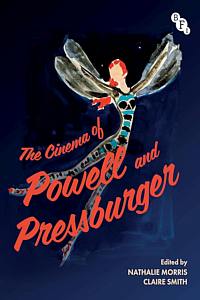English director Michael Powell and screenwriter Emeric Pressburger, a Hungarian refugee who came to England in the 1930s, as a team turned out to be visionaries of British film, who created breathtaking cinematic masterpieces.
 Those often would include elements from fairy-tales, surreal environments, dark and dangerous settings, as well as enchanting Technicolor dreams, sometimes in one and the same production.
Those often would include elements from fairy-tales, surreal environments, dark and dangerous settings, as well as enchanting Technicolor dreams, sometimes in one and the same production.
Their first collaboration, The Spy in Black (1939), quickly convinced both that they had met their creative counterparts. Soon, in 1943, their own (now legendary) production company “the Archers” was founded. Powell and Pressburger always shared a high degree of respect for the other, and their works would be introduced with the credits “Written, Produced and Directed by” – the collective – one could argue. Although the name that appeared was “the Archers.” They were true pioneers of “cinema d’auteur,” as it would be called in later years.
The publication at hand is another celebration of the two by the British Film Institute. Both book editors draw from a long record of exhibitions and presenting media at the BFI. Nathalie Morris is senior curator of Special Collections at the BFI and has contributed to numerous books, DVD editions, TV shows and radio broadcasts. Claire Smith is Curator of Stills, Posters and Designs at the BFI and has provided content for many projects, and exhibitions on design and art.
Even if collaboration of several artistic minds was not new to American or British cinema in the 1940s, “… Powell and Pressburger’s shared credit most certainly was,” comment Morris and Smith. “It defined their practice. Both had significant (and in many ways groundbreaking) careers separate from this collaboration, but it is the films they made together until the disbandment of the Archers in 1957 that really changed the landscape of cinema. These were some of the biggest films of their day, including The Life and Death of Colonel Blimp (1943), A Canterbury Tale (1944), I Know where I’m Going! (1945), A Matter of Life and Death (1946), Black Narcissus (1947), The Red Shoes (1948), The Small Back Room (1949) and Gone to Earth (1950).”
Both artists inspired countless other directors and authors, besides enchanting millions of cinema fans and extending the borders of the media, breaking new ground. “[They] took the first bold, imaginative steps on an artistic journey that continues top this day. It is clear that three quarters of a century on from the height of their partnership, the work of Powell and Pressburger continues to inspire and intrigue some of the most fascinating minds working today.”
The six texts and comments following their introduction, deal with a number of important artistic (and philosophical) questions concerning their output, although mostly the well-known Archer productions are in focus. Authors, among others, are Ian Christie, Sarah Street, Caitlin MacDonald, Mahesh Rao, Alexandra Harris, Marina Warner and Tim Walker. The title comes with a foreword by actress Tilda Swinton.
Apart from the movies Black Narcissus and The Red Shoes (the masterpiece with the 15 minute hypnotic ballet scene), several of their altogether 19 movies are referred to the subsequent essays. Those deal with categories and aesthetic excursions into the works of the duo, rather than having the focus on individual productions or years. Here, we learn about the meticulously planned and supervised details of set designs, costume design, the importance of specific colors, film photography and the overall perfectly prepared tales of magic and vision in the Technicolor world of Powell and Pressburger.
Although some of their films were shot and published during WWII, it is still amazing how audiences responded and understood the surreal, magical and often incredibly beauty and completeness of those masterpieces, even in the face of violence, hunger, destruction and millions of casualties. On the other hand, that may just have been the reason of their success.
The 250 color illustrations – many previously unseen or published – reveal true achievements of (watercolor, pencil or coal) sketches, scene coloration, continuity drawings, and stage settings. Nevertheless, the Powell/Pressburger magic was based to a large extend on a powerful visual language. Many illustrations are nothing but brilliant and worth individual exhibitions. Most were done by artists Alfred Junge, Ivor Beddoes, and Hein Heckroth. Dozens of objects, such as letters, set plans, early story sketches, and film stills allow additional detail for the reconstruction of the two perfectionists’ work, who would not leave the slightest detail, color, camera angle or plot development out of their sight.
Several former members of the Archers team add their recollections, concerning one or more productions, so does information, scripts, altered scenes and a mass of data recovered from different archives and collection scattered all over the world. Those vaults also contain many scripts and unfinished projects by Powell and Pressburger in various sates of realization; they tell of further terrific movies that unfortunately never took off.
This is a very beautiful and lavishly illustrated volume, full of admiration for Powell and Pressburger. It catches more than a glimpse of the screen magic those two once set in motion. And the contemporary film experts and professionals assembled here reveal some of the ideas and charms the duo originally implemented.
Review by Dr. A. Ebert © 2024
Nathalie Morris and Claire Smith (eds.) The Cinema of Powell and Pressburger. The British Film Institute / Bloomsbury Publishing, 2023, 224 p.
